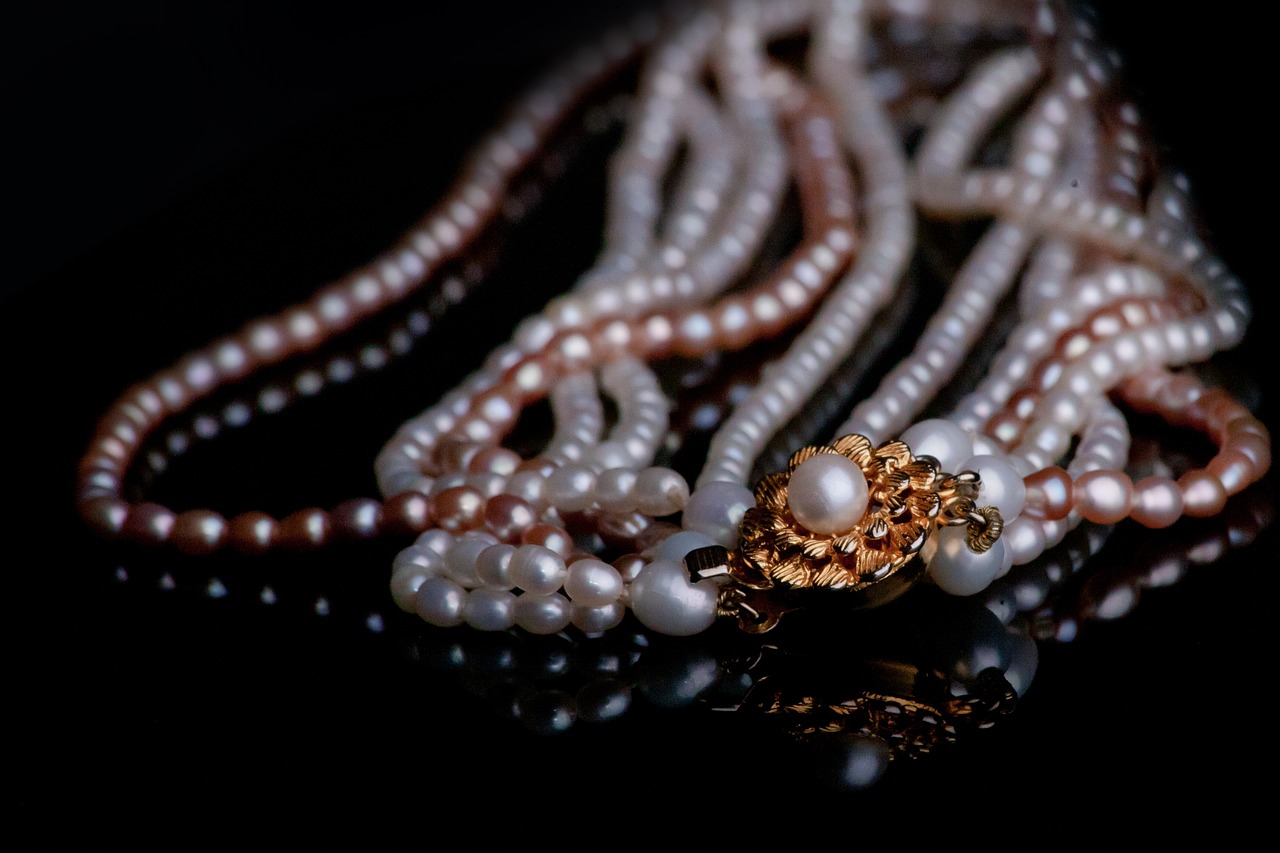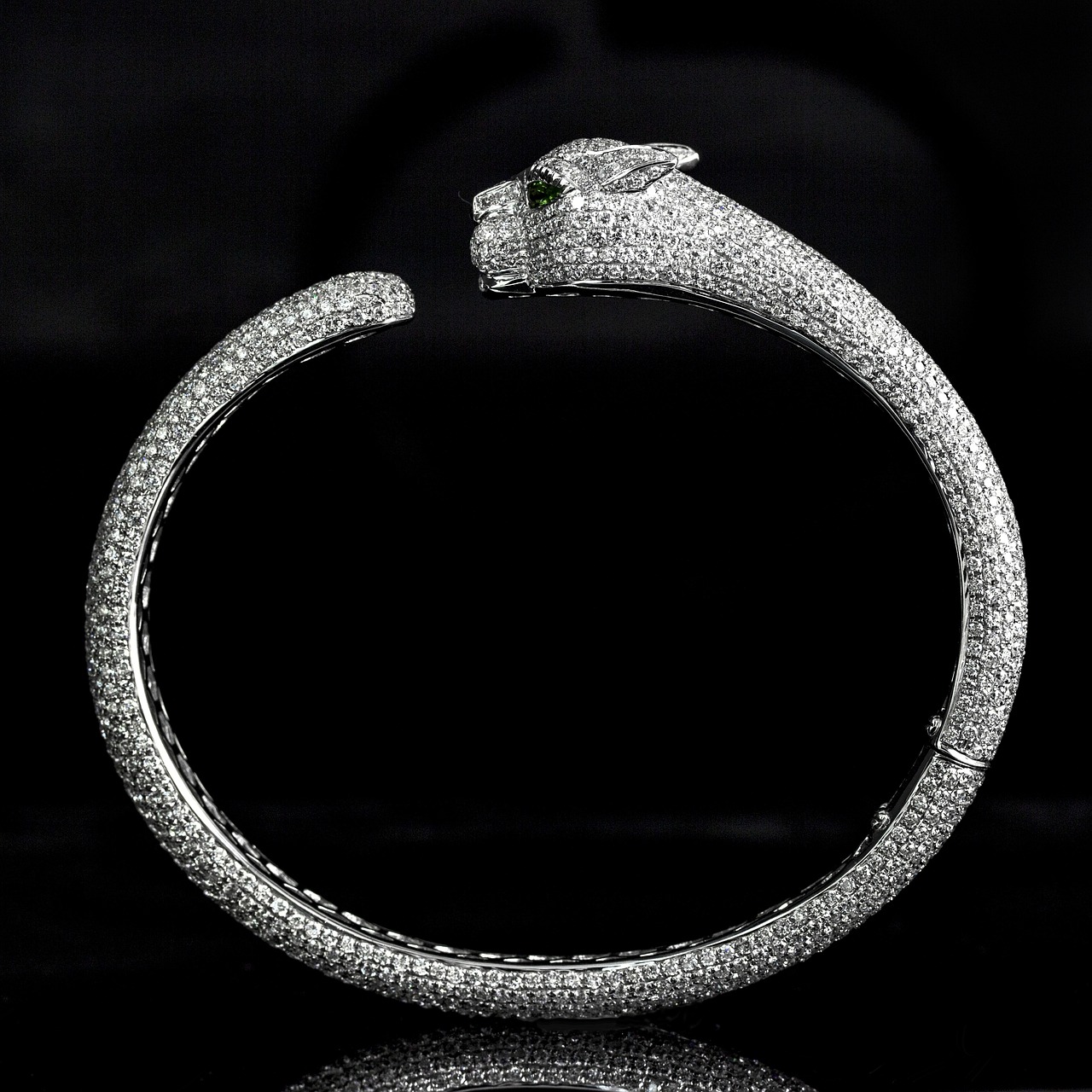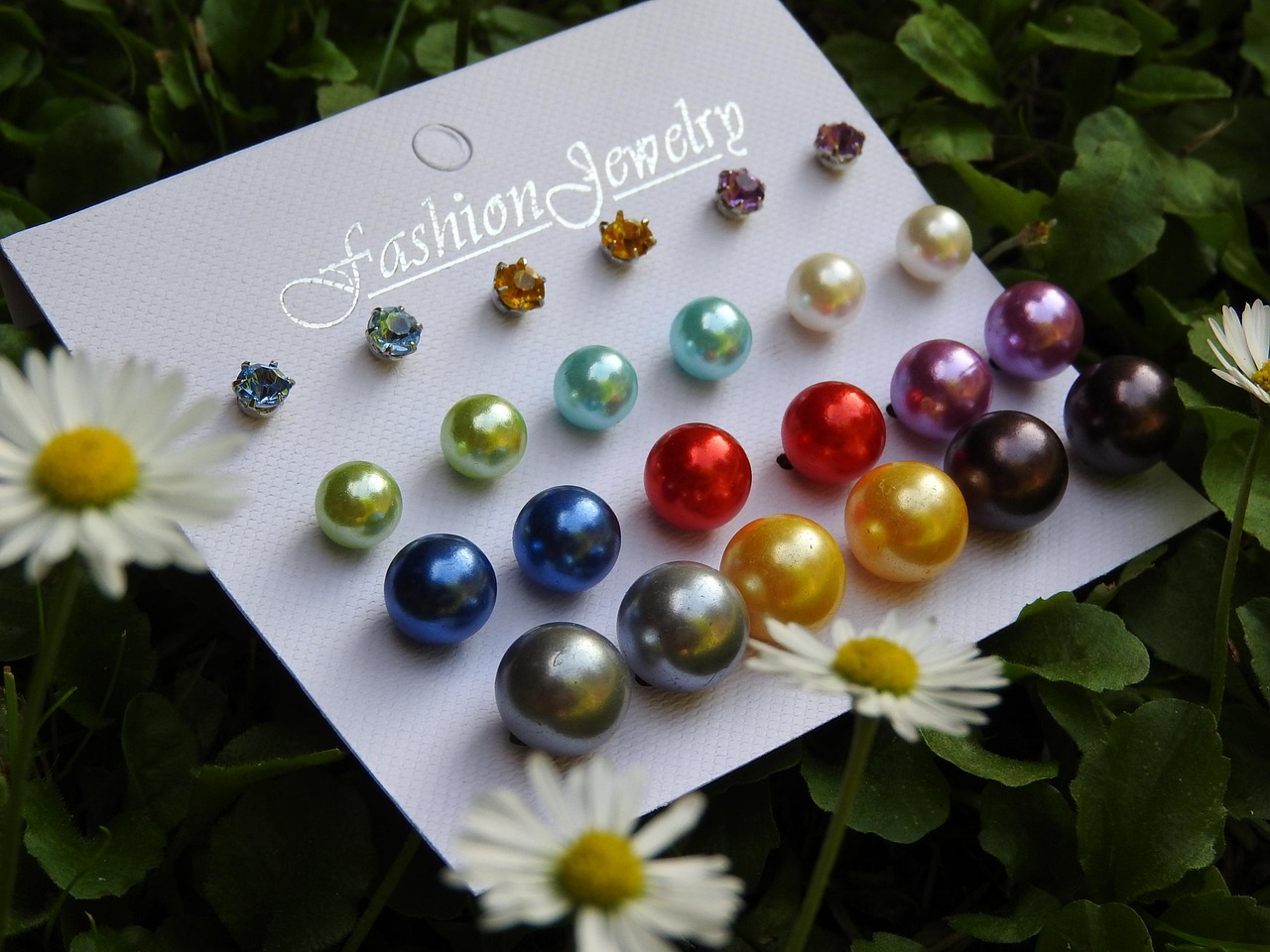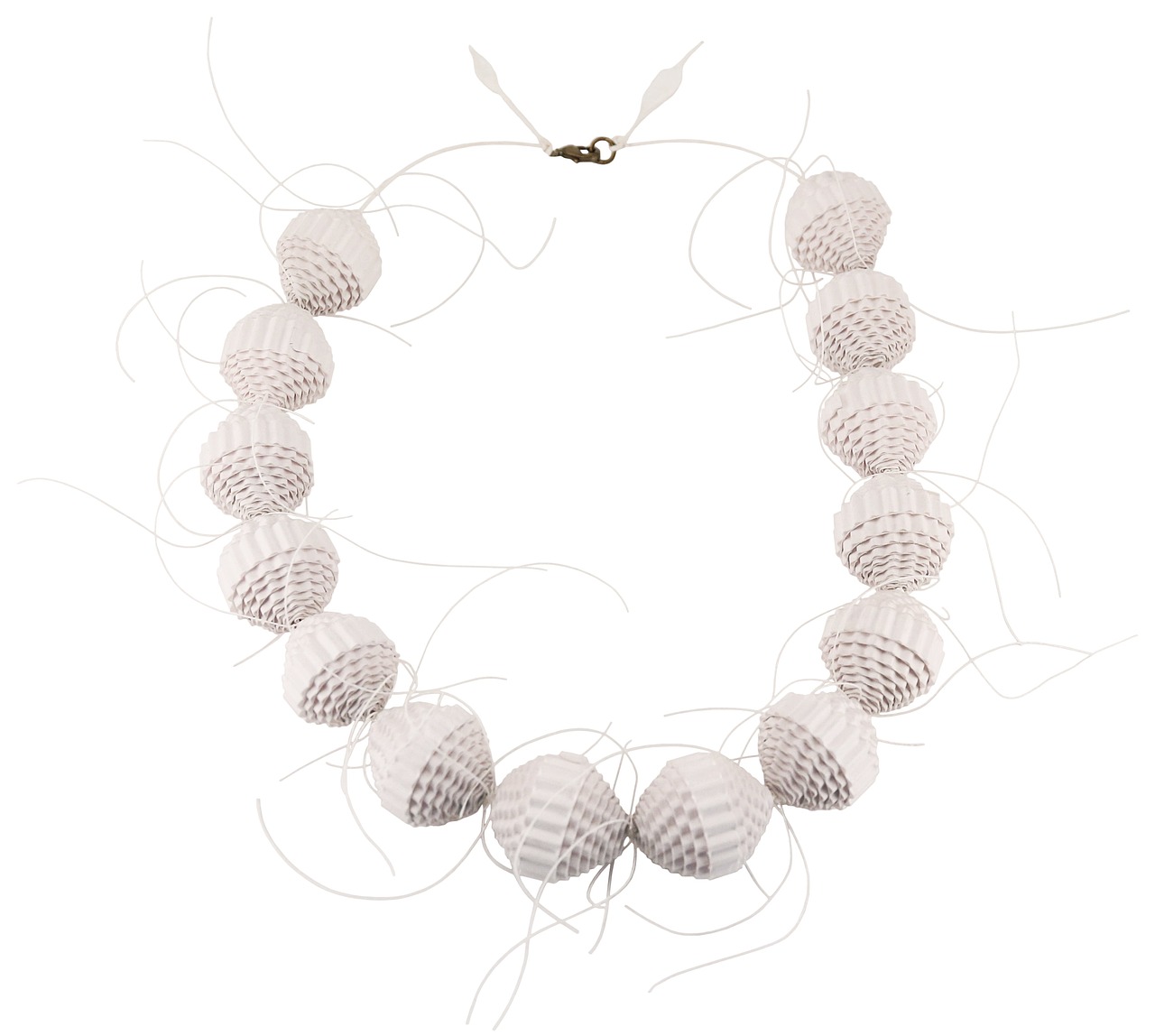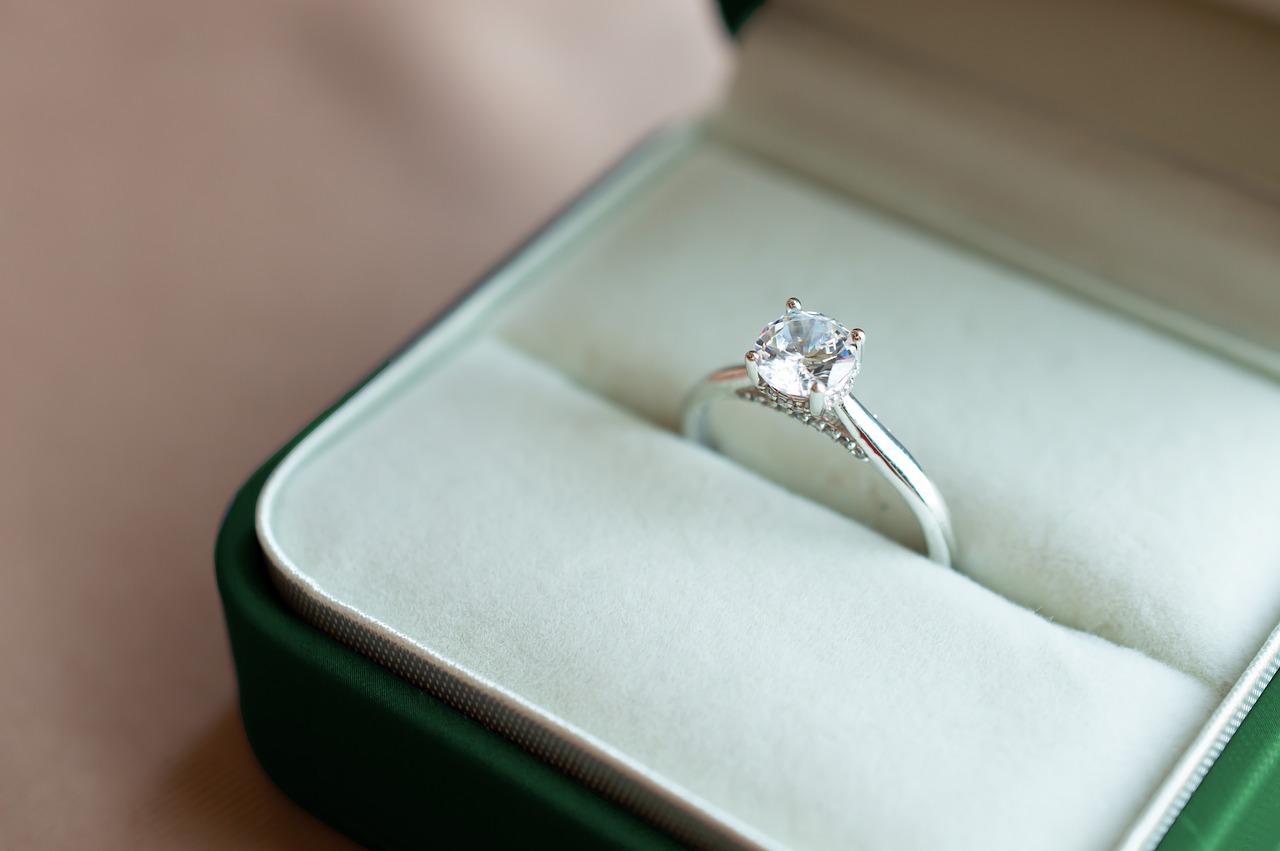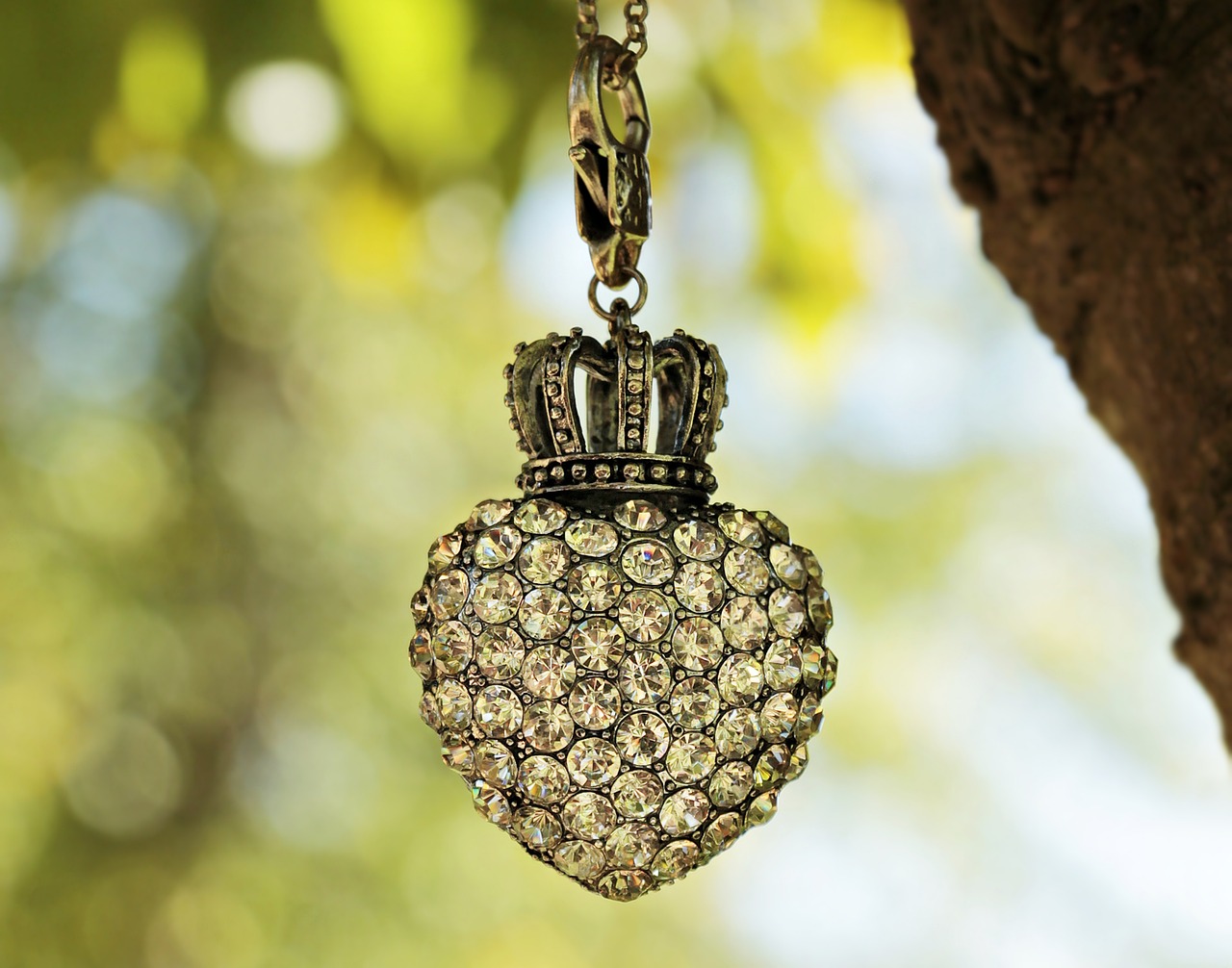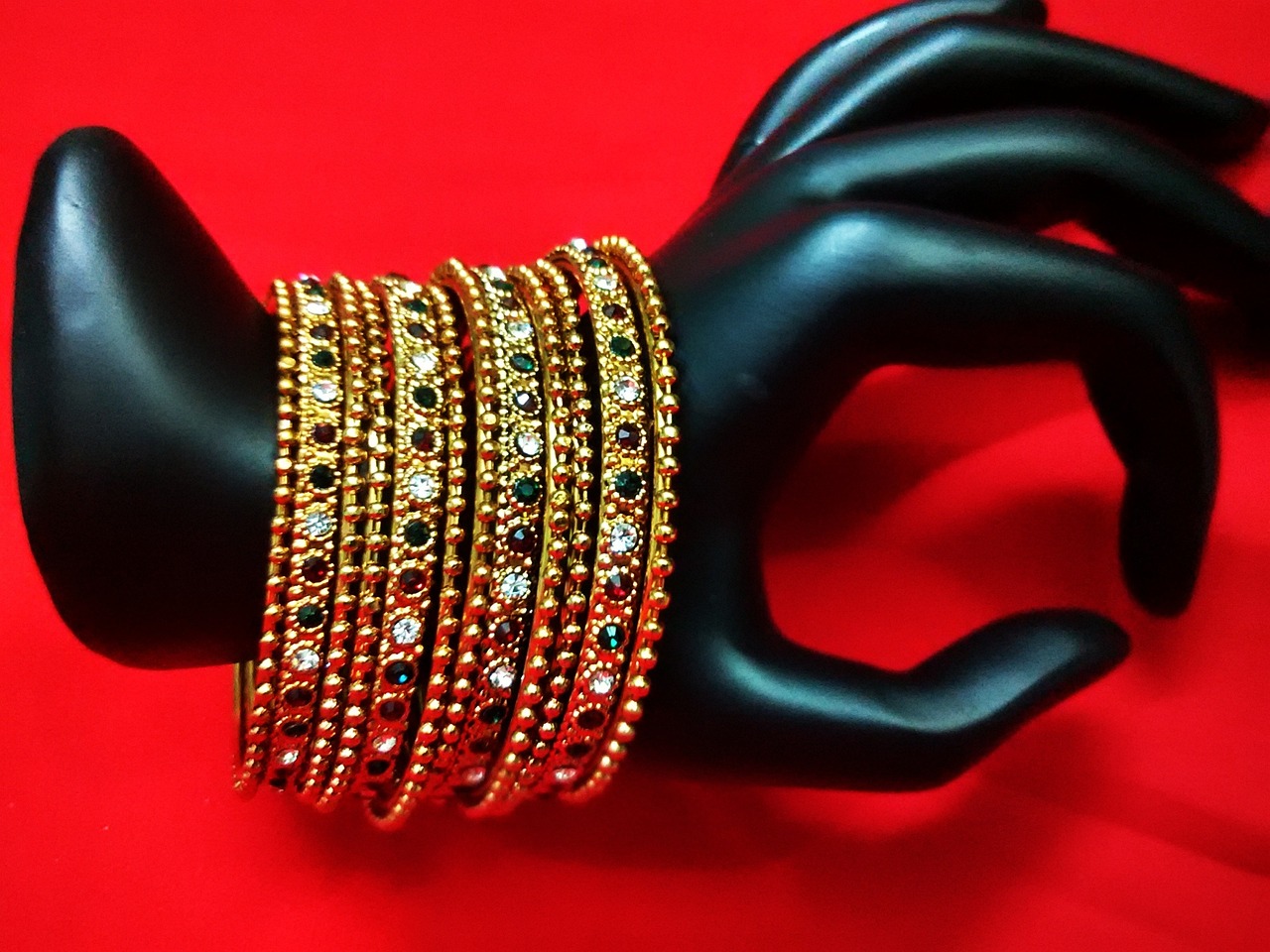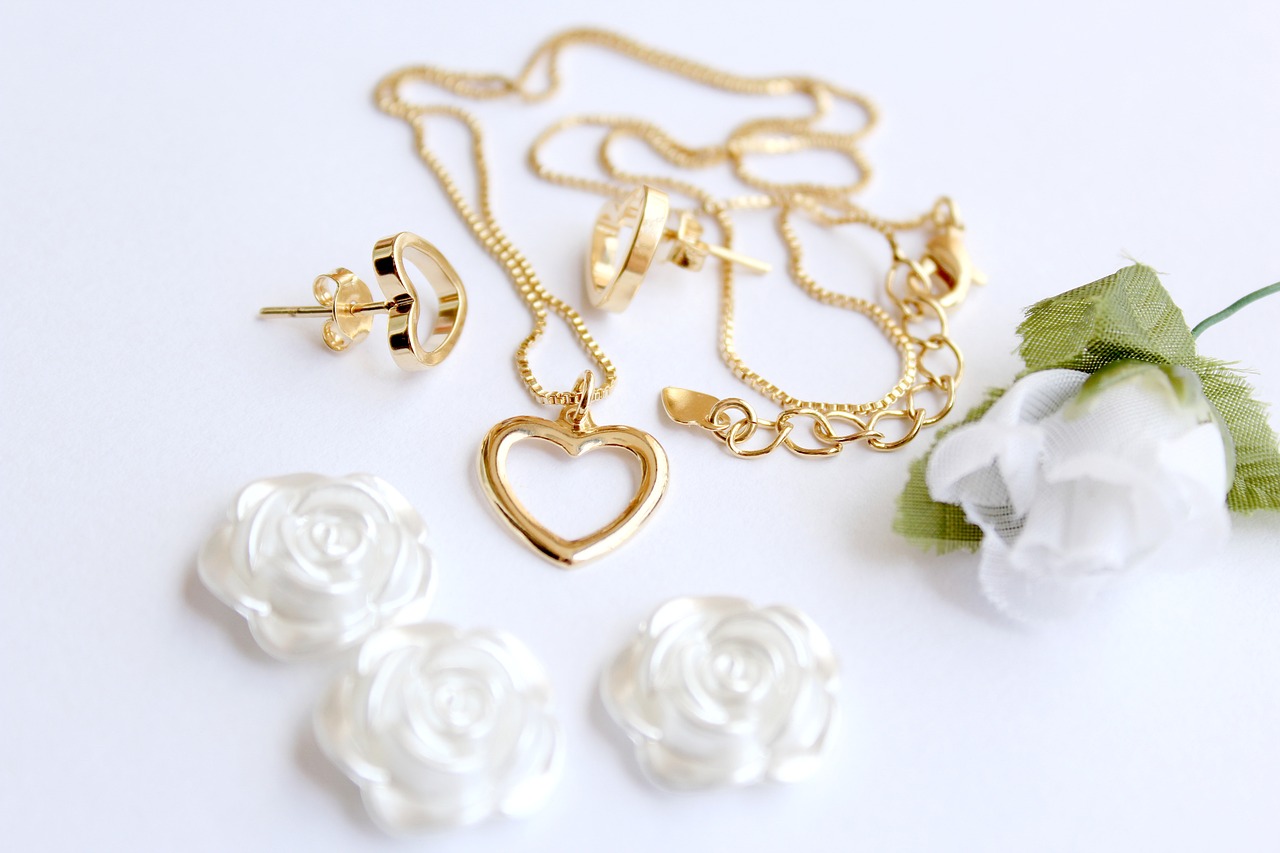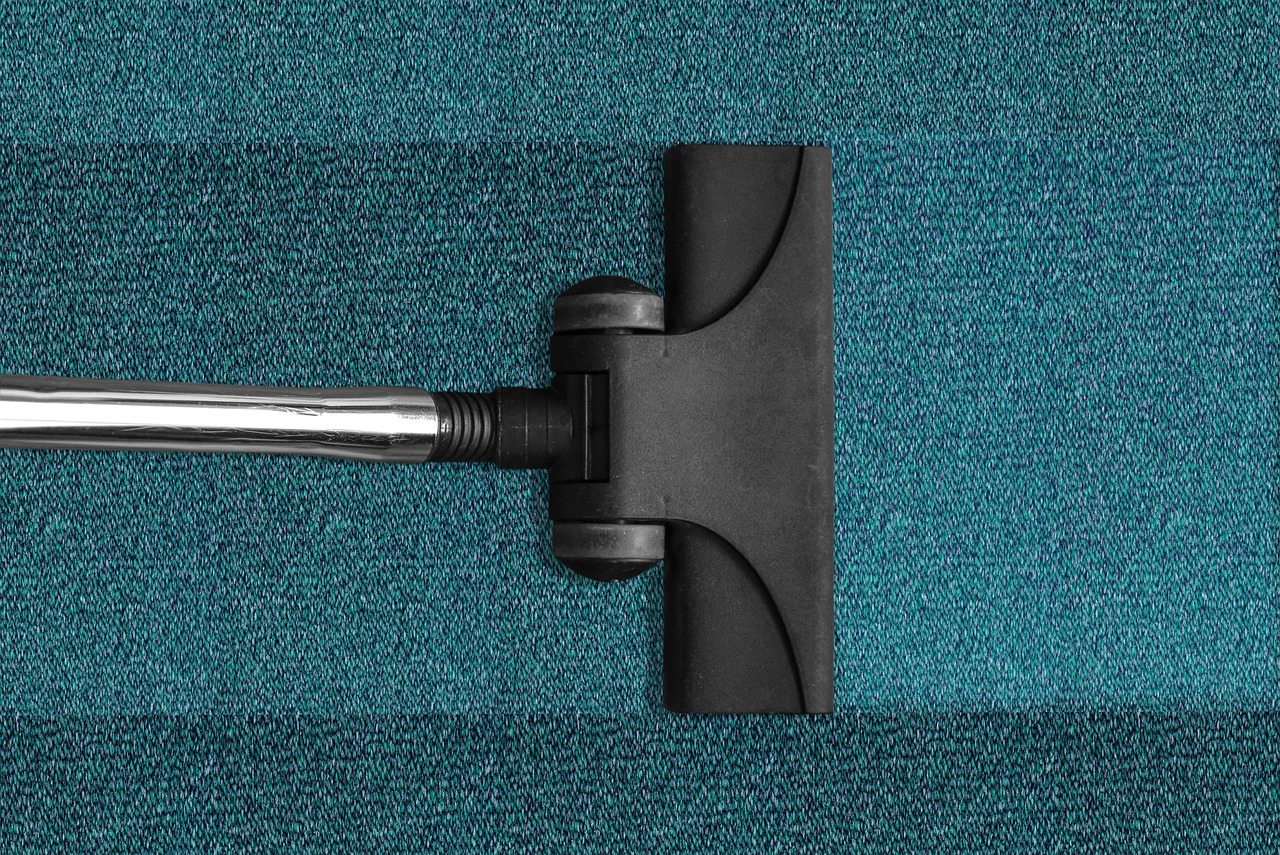This article explores the value of designer jewelry, examining its craftsmanship, brand reputation, and investment potential to help buyers make informed decisions.
What Makes Designer Jewelry Unique?
Designer jewelry is not merely an accessory; it is a statement of artistry and luxury. Each piece often features exclusive designs that are a reflection of the designer’s vision and brand identity. The use of high-quality materials, such as precious metals and gemstones, sets it apart from mass-produced alternatives. The artisanal craftsmanship involved in creating these pieces ensures that they are not just beautiful but also durable, making them a worthwhile investment.
How to Evaluate the Quality of Designer Jewelry?
- Materials: Look for precious metals like gold and platinum, as well as ethically sourced gemstones.
- Craftsmanship: Examine the finishing touches, such as the setting of stones and the smoothness of metal surfaces.
- Brand Heritage: Research the brand’s history and reputation in the jewelry industry.
Materials Used in Designer Jewelry
The choice of materials is crucial in determining the overall quality and appeal of designer jewelry. Gold and silver each offer unique properties that influence their desirability. For instance, gold is often seen as a symbol of wealth, while silver offers a more understated elegance.
Gold vs. Silver: Which is Better?
When comparing gold and silver, it is essential to consider personal style and intended use. Gold tends to be more durable and resistant to tarnishing, while silver may require more maintenance. Ultimately, the choice depends on individual preferences and the specific piece in question.
The Role of Gemstones in Value
Gemstones significantly enhance the allure of designer jewelry. Factors such as rarity, cut, and clarity play crucial roles in determining their worth. High-quality gemstones can elevate a piece from ordinary to extraordinary, often resulting in a substantial increase in value.
Craftsmanship: Why It Matters
The meticulous craftsmanship involved in designer jewelry is what transforms it into a work of art. Skilled artisans pay attention to every detail, ensuring that each piece is not only aesthetically pleasing but also structurally sound. This level of craftsmanship is a key reason why many buyers are willing to pay a premium.
Are Designer Brands Worth the Premium?
While designer brands often command higher prices, the associated prestige and quality assurance can justify the investment. A well-established brand typically signifies a commitment to excellence, which can be a significant factor for buyers.
Brand Reputation and Its Impact on Value
A reputable brand often translates to higher resale values and increased buyer confidence. The authenticity of designer jewelry is crucial, and established brands usually have stringent quality control measures in place to ensure their products meet high standards.
Resale Value: Is It Worth Considering?
For many buyers, understanding the potential resale value of designer jewelry is a critical aspect of their purchasing decision. Some pieces appreciate over time, making them not only a beautiful addition to one’s collection but also a sound investment.
How to Care for Designer Jewelry?
Proper maintenance is essential for preserving the beauty and integrity of designer jewelry. Regular cleaning and appropriate storage are vital for prolonging its lifespan and value.
Cleaning and Maintenance Tips
- Use a soft cloth to gently clean your jewelry after wearing it.
- Store pieces separately to avoid scratches.
- Avoid exposure to harsh chemicals and extreme temperatures.
When to Seek Professional Help
Certain issues, such as repairs or restorations, require professional expertise. Seeking help from a qualified jeweler can ensure that the integrity and value of the piece are maintained.
Are There Alternatives to Designer Jewelry?
For buyers on a budget, exploring alternative brands or custom pieces can provide similar aesthetics and quality without the designer price tag.
Custom Jewelry: A Personalized Option
Custom jewelry allows for unique designs tailored to individual preferences, offering a personal touch that can rival designer options in both quality and aesthetics.
Emerging Designers: Hidden Gems
Many emerging designers offer high-quality pieces at more accessible prices, providing an opportunity to discover unique styles without the premium associated with established brands.
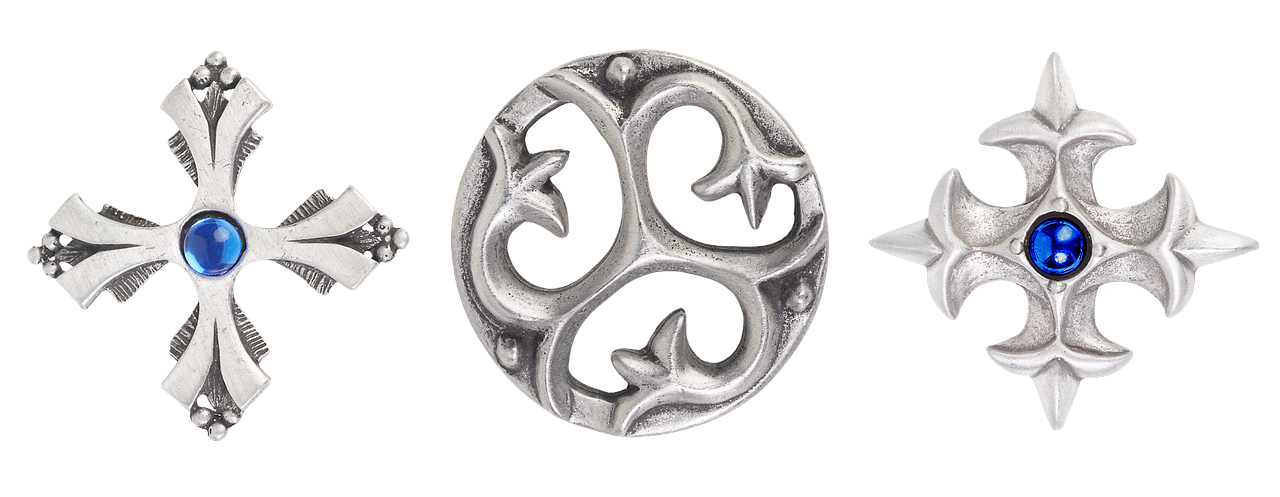
What Makes Designer Jewelry Unique?
Designer jewelry is not just an accessory; it is a statement of individuality, artistry, and luxury. The uniqueness of designer jewelry stems from a combination of exclusive designs, premium materials, and exceptional craftsmanship. Each piece often encapsulates the designer’s vision, offering something that transcends mere adornment.
One of the primary factors that make designer jewelry unique is its exclusive designs. Unlike mass-produced items, designer pieces are often limited editions or one-of-a-kind creations. This exclusivity adds a layer of prestige and allure, making them highly sought after by collectors and enthusiasts alike. The creativity involved in these designs often reflects the designer’s personal journey, cultural influences, and artistic vision.
When it comes to designer jewelry, the choice of materials plays a crucial role in defining its uniqueness. Many designers utilize high-quality materials such as:
- Precious Metals: Gold, platinum, and sterling silver are commonly used, each offering unique properties that enhance the piece’s durability and aesthetic appeal.
- Gemstones: Designer jewelry often features rare and ethically sourced gemstones, which not only add beauty but also significant value.
The combination of these materials results in pieces that are not only visually stunning but also enduring, making them worthy investments.
The meticulous craftsmanship involved in creating designer jewelry is another aspect that sets it apart. Skilled artisans devote countless hours to ensure that each piece is crafted to perfection. This level of attention to detail guarantees not only the beauty of the jewelry but also its longevity. From intricate engravings to flawless gemstone settings, the craftsmanship is a testament to the designer’s commitment to quality.
Designer jewelry often embodies a specific brand identity that resonates with consumers. Established brands carry a legacy that is built on years of trust and quality assurance. This reputation not only enhances the desirability of the jewelry but also influences its resale value, as pieces from renowned brands often fetch higher prices in the secondary market.
Purchasing designer jewelry is often an emotional experience. Each piece tells a story, whether it’s a gift for a loved one or a personal milestone. This emotional connection adds to the piece’s uniqueness, as it becomes a cherished item that holds personal significance. In many cases, designer jewelry can even become a family heirloom, passed down through generations.
Lastly, the investment potential of designer jewelry cannot be overlooked. Many buyers view these pieces as not just adornments but as investments that can appreciate over time. The combination of exclusive designs, high-quality materials, and brand reputation contributes to the overall value, making designer jewelry a worthwhile consideration for those looking to invest in luxury items.
In summary, the uniqueness of designer jewelry lies in its exclusive designs, high-quality materials, artisanal craftsmanship, brand identity, emotional significance, and investment potential. Each piece offers a blend of artistry and luxury, making it a treasured addition to any collection.
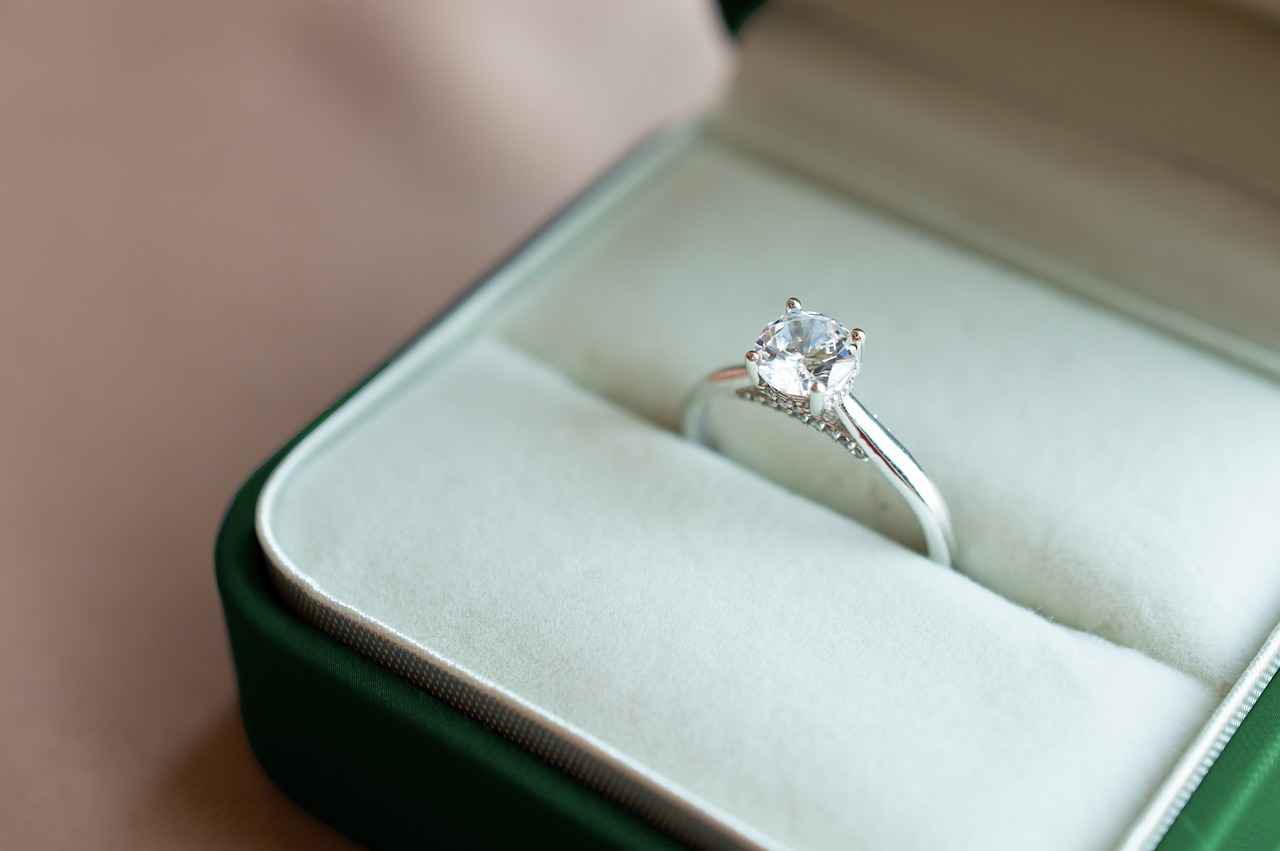
How to Evaluate the Quality of Designer Jewelry?
When it comes to investing in designer jewelry, understanding the quality is paramount. Evaluating this quality involves a comprehensive assessment of various elements, including materials, craftsmanship, and brand heritage. Each of these factors plays a crucial role in determining not only the aesthetic appeal of the piece but also its potential investment value.
The materials used in designer jewelry are often indicative of its overall quality. High-end pieces typically feature precious metals such as gold, platinum, or sterling silver, which not only enhance the visual appeal but also ensure durability. Gemstones are another critical component, and their quality can significantly affect the piece’s value. Factors such as rarity, cut, and clarity are essential in determining the worth of gemstones, making it vital for buyers to understand these attributes.
In the world of designer jewelry, craftsmanship is what transforms a piece from ordinary to extraordinary. The meticulous attention to detail in the design and construction process often reflects the designer’s skill and vision. High-quality craftsmanship ensures not only the durability of the jewelry but also elevates it to a level of artistry that justifies its price. Look for signs of expert workmanship, such as smooth finishes, secure settings, and consistent design elements.
Understanding the heritage of the brand is equally important when evaluating designer jewelry. Established brands often carry a reputation for quality and exclusivity, which can enhance the piece’s desirability and resale value. The history and legacy of a brand can provide insights into its commitment to quality, making it a vital consideration for potential buyers.
Each of the aforementioned elements—materials, craftsmanship, and brand heritage—contributes to the investment value of designer jewelry. A piece that boasts high-quality materials and exceptional craftsmanship from a reputable brand is likely to retain its value over time, or even appreciate. Therefore, potential buyers should conduct thorough research and consider these factors to make informed decisions.
- Research the Brand: Understand the brand’s history and reputation in the jewelry market.
- Inspect Materials: Check for authenticity and quality of metals and gemstones.
- Examine Craftsmanship: Look for signs of meticulous work, such as even settings and polished finishes.
- Seek Expert Opinions: Don’t hesitate to consult with jewelry appraisers or experts for insights.
- Consider the Piece’s Story: Unique designs often come with a narrative that adds to their value.
In conclusion, evaluating the quality of designer jewelry is a multifaceted process that requires careful consideration of materials, craftsmanship, and brand heritage. By understanding these elements, buyers can make more informed choices, ensuring that their investment not only enhances their collection but also holds its value over time.
Materials Used in Designer Jewelry
When it comes to designer jewelry, the choice of materials plays a pivotal role in defining the piece’s overall quality and appeal. Understanding the materials used can help buyers appreciate the artistry and craftsmanship behind each creation.
Designer pieces often use precious metals and gemstones, with each material contributing to the overall quality, durability, and visual appeal of the jewelry. The combination of these materials not only enhances the aesthetic value but also reflects the designer’s vision and expertise. Let’s delve deeper into the significance of these materials.
Precious metals such as gold, silver, and platinum are commonly utilized in designer jewelry due to their inherent properties:
- Durability: Precious metals are resistant to tarnishing and corrosion, ensuring that the jewelry maintains its beauty over time.
- Value: The intrinsic value of these metals often appreciates, making them a wise investment choice.
- Versatility: They can be easily shaped and polished, allowing designers to create intricate and unique designs.
Gemstones serve as the focal point in many designer pieces, adding color and brilliance. The choice of gemstones can significantly influence the piece’s value:
- Rarity: Unique gemstones, such as diamonds, emeralds, and rubies, are often more valuable due to their scarcity.
- Cut and Clarity: The way a gemstone is cut affects its sparkle and visual appeal, while clarity determines its quality.
- Color: The hue and saturation of a gemstone can enhance its desirability, with vibrant colors often commanding higher prices.
Both gold and silver have their unique advantages, making them popular choices in designer jewelry:
- Gold: Known for its luxurious appeal, gold is available in various karats, which indicate its purity. It is a timeless choice that retains value.
- Silver: While more affordable, silver offers a beautiful luster. Sterling silver, which is 92.5% pure, is commonly used in designer pieces.
Gemstones can enhance the allure and price of designer jewelry. Their value is determined by several factors:
- Rarity: Unique and rare gemstones tend to appreciate over time, making them a worthy investment.
- Market Trends: The popularity of certain gemstones can fluctuate, impacting their value in the market.
In conclusion, the materials used in designer jewelry—precious metals and gemstones—are crucial in defining the piece’s quality and value. Understanding these elements not only enhances appreciation for the artistry involved but also assists buyers in making informed purchasing decisions. As you explore the world of designer jewelry, consider these factors to ensure that your investment is both beautiful and valuable.
Gold vs. Silver: Which is Better?
When it comes to designer jewelry, the choice between gold and silver is often a matter of personal preference, but understanding their unique properties can significantly influence your decision. Both metals have been cherished for centuries, each offering distinct aesthetic qualities and practical benefits that appeal to different tastes and styles.
Gold is renowned for its luxurious appearance and remarkable durability. Its resistance to tarnishing and corrosion makes it an ideal choice for jewelry that can be worn daily. Gold’s natural luster and warm tones create a timeless appeal, making it a favorite among jewelry designers. Additionally, gold is available in various karats, with 24k gold being the purest form, although it is softer and more malleable.
Silver, particularly sterling silver, is another popular choice in designer jewelry. It is known for its bright, shiny finish and affordability compared to gold. While silver is more susceptible to tarnishing, proper care can maintain its beauty. Silver’s versatility allows it to complement a wide range of gemstones and styles, making it a favorite for both casual and formal pieces.
- Gold: Offers a rich, warm glow that symbolizes wealth and luxury.
- Silver: Provides a cool, sleek look that is often associated with modern and minimalist designs.
The aesthetic appeal of these metals can influence their desirability in designer jewelry. Gold tends to convey opulence, while silver often embodies a more understated elegance.
From an investment perspective, gold has historically been viewed as a stable asset, often retaining its value over time. In contrast, silver can be more volatile, but it also has the potential for significant appreciation, especially in times of economic uncertainty. Buyers should consider their investment goals when choosing between the two.
Both gold and silver offer versatility in design, but they cater to different aesthetics. Gold is often used in classic, elegant designs, while silver is favored for contemporary, artistic pieces. The choice between the two may depend on your personal style and the specific look you wish to achieve.
Proper maintenance is crucial for both metals to preserve their beauty:
- Gold: Clean with a soft cloth and mild soap to maintain its shine.
- Silver: Regular polishing can help prevent tarnishing, and storing it in a cool, dry place can prolong its luster.
Ultimately, the choice between gold and silver in designer jewelry comes down to personal preference, style, and practical considerations. Each metal has its own unique properties and aesthetic qualities that can enhance any jewelry collection. Whether you lean towards the luxurious allure of gold or the modern elegance of silver, understanding their differences will help you make an informed decision that reflects your individual taste.
The Role of Gemstones in Value
When it comes to designer jewelry, gemstones play a pivotal role in enhancing both the allure and the overall price of the pieces. These precious stones are not merely decorative; they are integral to the value proposition of jewelry. Several factors contribute to the worth of gemstones, including rarity, cut, and clarity, each of which can dramatically influence the final price tag.
What Makes Gemstones Valuable?
- Rarity: The scarcity of a gemstone significantly impacts its value. For instance, diamonds are more common than emeralds or rubies, making the latter two more sought after and expensive.
- Cut: The quality of a gemstone’s cut determines how well it reflects light. A well-cut stone will sparkle and shine, enhancing its visual appeal and, consequently, its market value.
- Clarity: The presence of inclusions or blemishes can affect a gemstone’s beauty. Higher clarity often translates to a higher price, as flawless stones are rare.
How Do Gemstones Enhance Designer Jewelry?
Gemstones serve as the centerpiece of many designer pieces, drawing the eye and elevating the design. A stunning sapphire pendant or a pair of diamond earrings can transform a simple piece of jewelry into a statement of luxury and sophistication. The choice of gemstone often reflects the designer’s vision and can also tell a story, adding emotional value to the piece.
Investment Potential of Gemstones
Investing in designer jewelry adorned with high-quality gemstones can be a lucrative decision. Over time, certain gemstones appreciate in value, especially those that are rare or possess unique characteristics. For example, vintage pieces featuring natural pearls or rare colored diamonds can fetch significantly higher prices at auctions. Buyers should consider the gemstone’s provenance and market trends when evaluating investment potential.
Choosing the Right Gemstone
When selecting designer jewelry, it is essential to choose gemstones that not only appeal to personal taste but also hold their value. Here are some tips:
- Research the market trends for specific gemstones.
- Consider the emotional significance of the gemstone. For instance, birthstones or stones with personal meanings may hold more value for the wearer.
- Consult with experts or certified gemologists to ensure authenticity and quality.
Conclusion
In summary, gemstones are more than just beautiful additions to designer jewelry; they are crucial components that enhance both the aesthetic and financial value of the pieces. By understanding the factors that contribute to a gemstone’s worth, buyers can make informed decisions, ensuring that their investments are both meaningful and valuable.
Craftsmanship: Why It Matters
When it comes to designer jewelry, the term “craftsmanship” encompasses much more than just skillful assembly. It represents a profound dedication to quality, artistry, and the intricate processes involved in creating each piece. This meticulous attention to detail not only ensures durability but also transforms jewelry into a true work of art, making it worthy of its often hefty price tag.
Exceptional craftsmanship is characterized by several key elements:
- Attention to Detail: Every curve, angle, and setting is carefully considered, ensuring that the piece is not only beautiful but also functional.
- Quality Materials: The use of high-grade metals and gemstones enhances both the aesthetic appeal and longevity of the jewelry.
- Artistic Vision: Each designer brings their unique perspective, resulting in pieces that are not just accessories but expressions of creativity.
The craftsmanship involved in creating designer jewelry significantly impacts its value. When buyers invest in a piece, they are not just paying for the materials but also for the expertise and time that went into its creation. Well-crafted pieces often appreciate over time, making them a worthwhile investment.
To illustrate the importance of craftsmanship, consider the following examples:
- Hand-Engraving: Many luxury brands feature hand-engraved details that add uniqueness and character to each piece.
- Custom Settings: The way gemstones are set can dramatically alter the overall look and feel of the jewelry, showcasing the designer’s skill.
- Finishing Techniques: Techniques such as polishing and plating can enhance the visual appeal while also protecting the piece from wear and tear.
Investing in jewelry that showcases exceptional craftsmanship is crucial for several reasons:
- Longevity: Well-made pieces are less likely to suffer from damage or wear, ensuring that they can be cherished for generations.
- Resale Value: Pieces that are crafted with care often retain their value better than mass-produced alternatives.
- Emotional Connection: Owning a piece of jewelry that embodies artistry and skilled craftsmanship can create a deeper emotional connection for the wearer.
When shopping for designer jewelry, consider the following tips to identify quality craftsmanship:
- Inspect the Details: Look for signs of meticulous work, such as even settings and smooth finishes.
- Research the Brand: Familiarize yourself with the brand’s reputation for quality and craftsmanship.
- Seek Expert Opinions: Consult with jewelers or appraisers who can provide insights into the craftsmanship of specific pieces.
In conclusion, the craftsmanship behind designer jewelry is a vital aspect that elevates each piece beyond mere adornment. It embodies a blend of artistry, skill, and quality that justifies its price tag. By understanding and appreciating the intricacies of craftsmanship, buyers can make informed decisions that reflect both their personal style and investment goals.
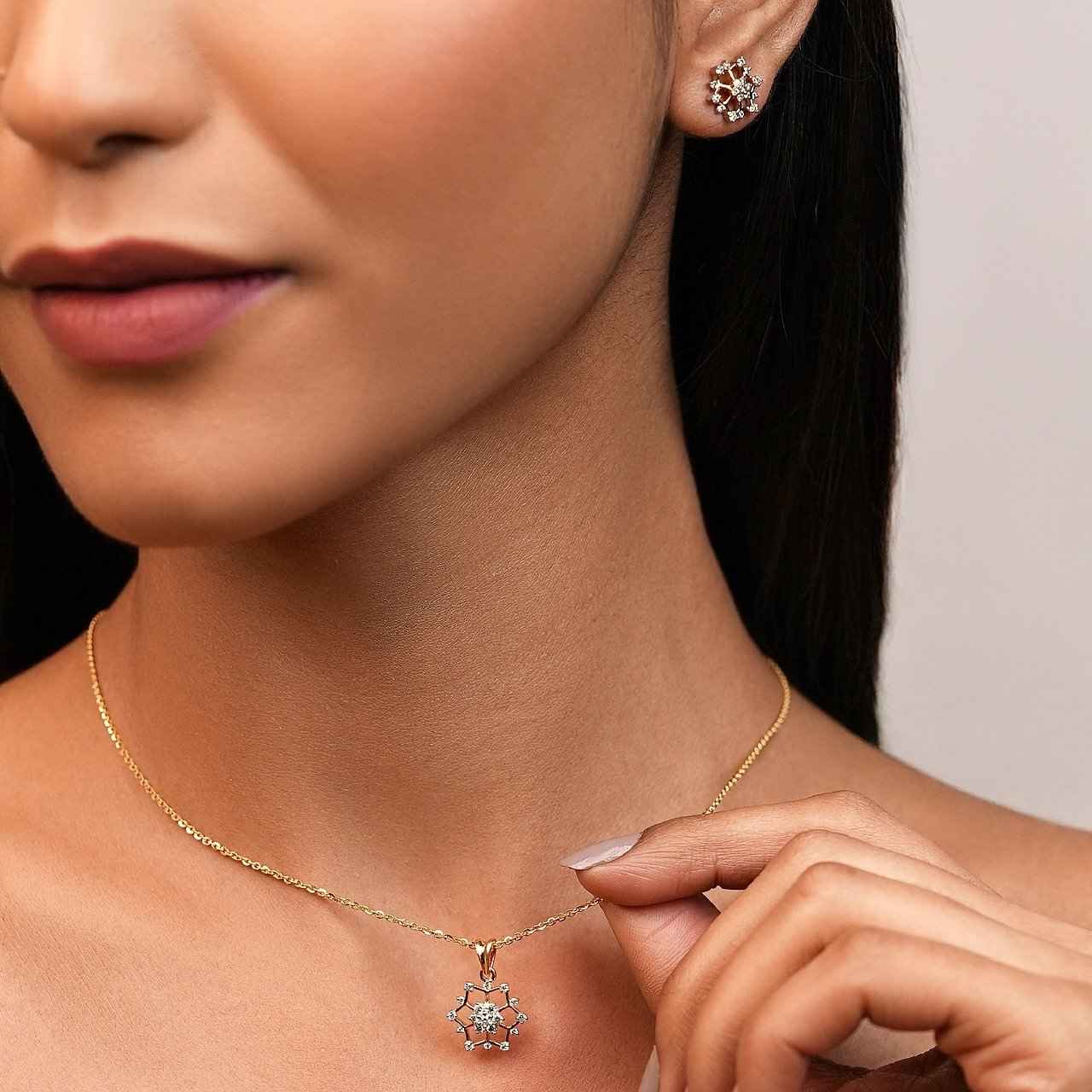
Are Designer Brands Worth the Premium?
When it comes to purchasing designer jewelry, many individuals find themselves pondering whether the higher price tag is truly justified. The question often arises: This inquiry goes beyond mere aesthetics, delving into the realms of prestige, quality assurance, and potential resale value.
Designer brands often command a premium due to their exceptional craftsmanship and the prestige that comes with owning a piece from a renowned designer. These brands have established a reputation for quality, which is reflected not only in the design but also in the materials used. For instance, many designer pieces feature high-quality gemstones and precious metals, ensuring that each item is not only beautiful but also durable.
One of the primary reasons buyers are willing to invest in designer jewelry is the prestige associated with the brand. Wearing a piece from a well-known designer can elevate one’s social status and serve as a symbol of success. This intrinsic value often justifies the premium price for many consumers, as it goes beyond the physical item and taps into a sense of identity and belonging.
When investing in jewelry, quality is paramount. Designer brands typically adhere to stringent quality standards, ensuring that each piece is meticulously crafted. This commitment to quality not only enhances the aesthetic appeal but also contributes to the longevity of the jewelry. Buyers can feel confident that their investment will stand the test of time, making it a worthwhile purchase.
Another critical factor to consider is the resale value of designer jewelry. Many pieces retain their value exceptionally well, and some even appreciate over time. For buyers considering jewelry as an investment, understanding the potential for resale can be a significant factor in their decision-making process. Brands with a strong market presence often have a loyal following, which can drive up demand for their pieces in the resale market.
While the benefits of purchasing designer jewelry are compelling, it is essential to acknowledge the risks. Not all designer pieces will appreciate in value, and trends can shift, impacting desirability. Buyers should conduct thorough research and consider the specific piece’s history and market trends before making a purchase.
Ultimately, whether designer brands are worth the premium is a subjective question that varies from buyer to buyer. For those who value quality, prestige, and potential investment returns, the answer may be a resounding yes. However, for others, exploring alternative options may provide similar aesthetic satisfaction without the hefty price tag. Regardless of the choice, making an informed decision is crucial to ensuring that the investment aligns with personal values and financial goals.
Brand Reputation and Its Impact on Value
When it comes to luxury purchases, brand reputation plays a pivotal role in determining the overall value of designer jewelry. A well-established brand often signifies not just prestige but also a commitment to quality and craftsmanship. This perception significantly influences consumer behavior, as buyers tend to associate well-known brands with authenticity and reliability.
The reputation of a brand can enhance buyer confidence, especially in the world of jewelry where authenticity is paramount. Established brands have built their names over time through consistent quality and innovative designs. This history provides assurance to buyers that they are investing in a product that meets high standards. Furthermore, when a brand is recognized globally, it often leads to higher resale values. Buyers are more likely to pay a premium for pieces from brands they trust, knowing that they can recoup a portion of their investment if they choose to sell later.
Resale value is a critical factor for many luxury buyers. A brand with a solid reputation typically commands higher prices on the second-hand market. This is due to the desirability associated with the brand. For instance, jewelry from iconic brands like Cartier or Tiffany & Co. often retains its value much better than lesser-known labels. The demand for these pieces remains high, which can be attributed to their unique designs and the prestige of owning something from a renowned jeweler.
Another significant aspect of brand reputation is the trust it fosters regarding the authenticity of the jewelry. In a market where counterfeit products are prevalent, buyers gravitate towards established brands that provide guarantees of authenticity. This assurance not only enhances the perceived value of the piece but also contributes to the overall confidence buyers feel when making a purchase. Certificates of authenticity and brand provenance are often included with high-end purchases, further solidifying consumer trust.
Brand heritage—the history and story behind a brand—also plays a crucial role in shaping its reputation. Brands that can effectively communicate their legacy, craftsmanship, and the artisans behind their creations often find a more dedicated customer base. This narrative can make a piece of jewelry feel even more special, as buyers appreciate the artistry and tradition involved in its creation. The emotional connection formed through a brand’s story can enhance the perceived value of the jewelry, making it more than just a decorative item but a piece of art with a rich history.
While established brands have long dominated the luxury jewelry market, there is a growing trend towards supporting emerging designers. Many of these new brands are gaining recognition for their unique designs and ethical practices. Buyers are increasingly drawn to brands that prioritize sustainability and transparency, which can also affect brand reputation and, consequently, value. As consumers become more discerning, the landscape of brand reputation is evolving, leading to new dynamics in how value is perceived in designer jewelry.
In summary, brand reputation is a fundamental aspect that influences the value of designer jewelry. From enhancing buyer confidence to ensuring higher resale values, the impact of a brand’s standing in the market cannot be overstated. As the jewelry industry continues to evolve, understanding the nuances of brand reputation will be essential for buyers looking to make informed and valuable investments.
Resale Value: Is It Worth Considering?
When investing in designer jewelry, one of the most critical aspects to consider is the potential resale value. This factor can significantly influence purchasing decisions, particularly for buyers who view their jewelry as a long-term investment. Understanding how resale value works can help you make informed choices that align with your financial goals.
The resale value of designer jewelry is not merely a reflection of its initial purchase price; it encompasses various elements that contribute to its worth over time. Buyers should consider the following:
- Brand Reputation: Renowned brands often maintain higher resale values due to their established reputation and demand in the market.
- Craftsmanship: Exceptional craftsmanship can enhance a piece’s desirability, leading to better resale opportunities.
- Material Quality: The use of high-quality materials, such as precious metals and rare gemstones, can significantly impact a jewelry piece’s value.
Several factors can affect the resale value of designer jewelry:
- Condition: The overall condition of the piece plays a vital role. Well-maintained jewelry is more likely to fetch a higher price.
- Market Trends: The popularity of certain styles or brands can fluctuate, influencing resale values. Staying updated on market trends is essential.
- Documentation: Having original receipts, certificates of authenticity, and packaging can enhance resale value, as they provide proof of authenticity and origin.
Before purchasing designer jewelry, consider the following steps to evaluate its potential resale value:
- Research the Brand: Investigate the brand’s history and reputation in the market. Brands with a strong following tend to have better resale values.
- Check Online Marketplaces: Look at platforms like eBay or specialized jewelry resale sites to gauge current market prices for similar pieces.
- Consult Experts: Engage with jewelers or appraisers who can provide insights into the piece’s potential value over time.
While resale value is an important consideration, it’s essential to balance it with the emotional value of the piece. Designer jewelry often carries sentimental significance, which can outweigh its financial aspects. Buyers should ask themselves:
- Will I wear this often? If a piece brings joy and is worn frequently, its emotional value can justify the purchase, regardless of resale potential.
- Is this piece timeless? Classic designs tend to retain value better than trendy items, making them wise investments.
In conclusion, understanding the potential resale value of designer jewelry is crucial for buyers considering long-term investments. By evaluating factors such as brand reputation, craftsmanship, and market trends, you can make informed decisions that align with both your financial goals and personal preferences. Whether you view jewelry as a financial asset or a cherished possession, being aware of its resale potential can enhance your overall purchasing experience.

How to Care for Designer Jewelry?
When it comes to designer jewelry, proper care is not just an option; it is a necessity. The intricate designs and high-quality materials that define these pieces require attention to maintain their beauty and integrity. In this section, we will explore effective methods to ensure your designer jewelry remains a cherished part of your collection for years to come.
Proper maintenance is essential to preserve the beauty and integrity of designer jewelry, ensuring it remains a cherished piece for years to come. Neglecting care can lead to dullness, scratches, and even damage that could diminish the value of your investment.
One of the most straightforward ways to care for your jewelry is through regular cleaning. Here are some tips:
- Soft Cloth Wipe: After each wear, gently wipe your jewelry with a soft, lint-free cloth to remove oils and dirt.
- Gentle Cleaners: Use a mild soap solution and a soft brush for more thorough cleaning, especially for pieces with intricate designs.
- Avoid Harsh Chemicals: Stay away from bleach or abrasive cleaners, as they can damage the finish and materials.
How you store your jewelry can significantly impact its condition. Consider the following storage tips:
- Individual Pouches: Store each piece in a separate pouch or box to prevent scratching and tangling.
- Climate Control: Keep your jewelry in a cool, dry place away from direct sunlight to avoid fading and deterioration.
- Use Anti-Tarnish Materials: Incorporate anti-tarnish strips or cloths in your storage to help protect silver pieces.
While regular maintenance can be done at home, certain situations call for professional intervention. Here are some scenarios where you should consult an expert:
- Repairs: If a piece is damaged or a gemstone is loose, seek a jeweler’s expertise to prevent further damage.
- Restoration: For vintage pieces that require restoration, professionals can help maintain their integrity and value.
- Appraisals: Periodic appraisals can help you understand the current value of your jewelry, especially if you plan to insure it.
Everyday activities can pose risks to your jewelry. To minimize wear and tear, consider the following precautions:
- Remove Before Activities: Take off your jewelry before swimming, exercising, or applying lotions and perfumes.
- Be Mindful of Climates: Extreme temperatures and humidity can affect certain materials; be cautious in such environments.
- Regular Inspections: Periodically check your jewelry for signs of wear and tear, addressing any issues promptly.
In conclusion, caring for designer jewelry is an ongoing commitment that pays off in the long run. By implementing regular cleaning, proper storage, and seeking professional help when necessary, you can ensure that your precious pieces retain their beauty and value. Remember, a little attention goes a long way in preserving the allure of your designer jewelry.
Cleaning and Maintenance Tips
When it comes to designer jewelry, maintaining its beauty and integrity is crucial for ensuring that it remains a cherished possession. Regular cleaning and appropriate storage are vital for preserving not only the shine but also the overall condition of these exquisite pieces. By following a few simple yet effective , you can significantly prolong the lifespan and value of your jewelry.
- Frequency of Cleaning: It’s recommended to clean your jewelry every few weeks, especially if it’s worn frequently. This helps to prevent the buildup of dirt and oils.
- Use Gentle Cleaners: Opt for a mild soap solution or a specialized jewelry cleaner. Avoid harsh chemicals that can damage delicate materials.
- Soft Cloths: Use a soft, lint-free cloth to gently wipe down your jewelry after each wear. This simple step can help maintain its luster.
- Ultrasonic Cleaners: For deeper cleaning, consider using an ultrasonic cleaner, but ensure it’s safe for the specific materials of your jewelry.
Proper storage is equally important in maintaining the quality of your jewelry. Here are some effective storage tips:
- Separate Compartments: Store pieces separately to prevent scratching and tangling. Use individual pouches or compartments in a jewelry box.
- Climate Control: Keep your jewelry in a cool, dry place. Avoid exposure to extreme temperatures and humidity, which can tarnish metals and damage stones.
- Avoid Sunlight: Prolonged exposure to sunlight can fade gemstones and affect the finish of metals, so store your jewelry away from direct light.
While regular maintenance can be done at home, there are times when professional help is necessary:
- Heavily Soiled Pieces: If your jewelry has accumulated significant grime, it’s best to take it to a professional for thorough cleaning.
- Loose Stones: If you notice any stones becoming loose, seek a jeweler’s expertise to avoid losing precious gems.
- Repairs: Any signs of damage, such as broken clasps or bent settings, should be addressed by a professional to maintain the piece’s integrity.
By implementing these , you can ensure that your designer jewelry remains as stunning as the day you bought it. Remember, taking the time to care for your jewelry not only enhances its appearance but also protects your investment for years to come. Whether you’re a seasoned collector or a first-time buyer, these practices will help you appreciate the true value of your designer pieces.
When to Seek Professional Help
When it comes to designer jewelry, ensuring its longevity and maintaining its value is crucial. While many enthusiasts enjoy wearing and showcasing their exquisite pieces, there are times when professional intervention becomes necessary. This section will explore the various scenarios in which seeking expert help is not only advisable but essential for preserving the integrity of your jewelry.
Designer jewelry often represents a significant financial investment, making it imperative to protect that investment. Professional jewelers possess the expertise and tools required to handle delicate materials, ensuring that repairs or restorations are performed correctly without compromising the piece’s value.
- Repairs: Over time, even the most carefully worn jewelry can suffer from wear and tear. This includes broken clasps, loose stones, or damaged settings. Attempting to repair these issues on your own can lead to further damage, making professional assistance essential.
- Restorations: If your jewelry has lost its original luster or has become tarnished, a professional can restore it to its former glory. This may involve cleaning, polishing, or even re-setting stones. Their specialized knowledge ensures that the restoration process enhances rather than detracts from the piece.
- Appraisals: Understanding the current value of your jewelry is vital, especially if you plan to sell or insure it. A certified appraiser can provide an accurate valuation based on market trends, materials, and craftsmanship.
- Customization: If you’re looking to modify an existing piece or create something entirely new, professionals can guide you through the process, ensuring that your vision is realized while maintaining structural integrity.
Selecting the right expert is crucial to ensuring quality work. Here are some tips:
- Research: Look for jewelers with a solid reputation, positive reviews, and relevant certifications. This can often be found through online searches or word-of-mouth recommendations.
- Consultation: Before committing, schedule a consultation to discuss your needs. This meeting allows you to gauge their expertise and approach to your specific situation.
- Portfolio: Review their previous work to assess their craftsmanship and style. A reputable jeweler will be happy to share examples of their repairs or restorations.
While professional help is invaluable, regular maintenance can extend the time between visits. Here are some simple tips to keep your designer jewelry in top condition:
- Regular Cleaning: Gently clean your jewelry with a soft cloth and mild soap solution to remove dirt and oils. Avoid harsh chemicals that can damage the materials.
- Proper Storage: Store your pieces separately in soft pouches or a jewelry box to prevent scratches and tangling.
- Avoiding Harsh Environments: Remove your jewelry before engaging in activities that may expose it to harsh chemicals, extreme temperatures, or physical stress.
In conclusion, while the allure of designer jewelry is undeniable, it comes with the responsibility of proper care and maintenance. Knowing when to seek professional help is key to preserving both the beauty and value of your cherished pieces. By following the guidelines above, you can ensure that your jewelry remains a stunning and valuable part of your collection for years to come.
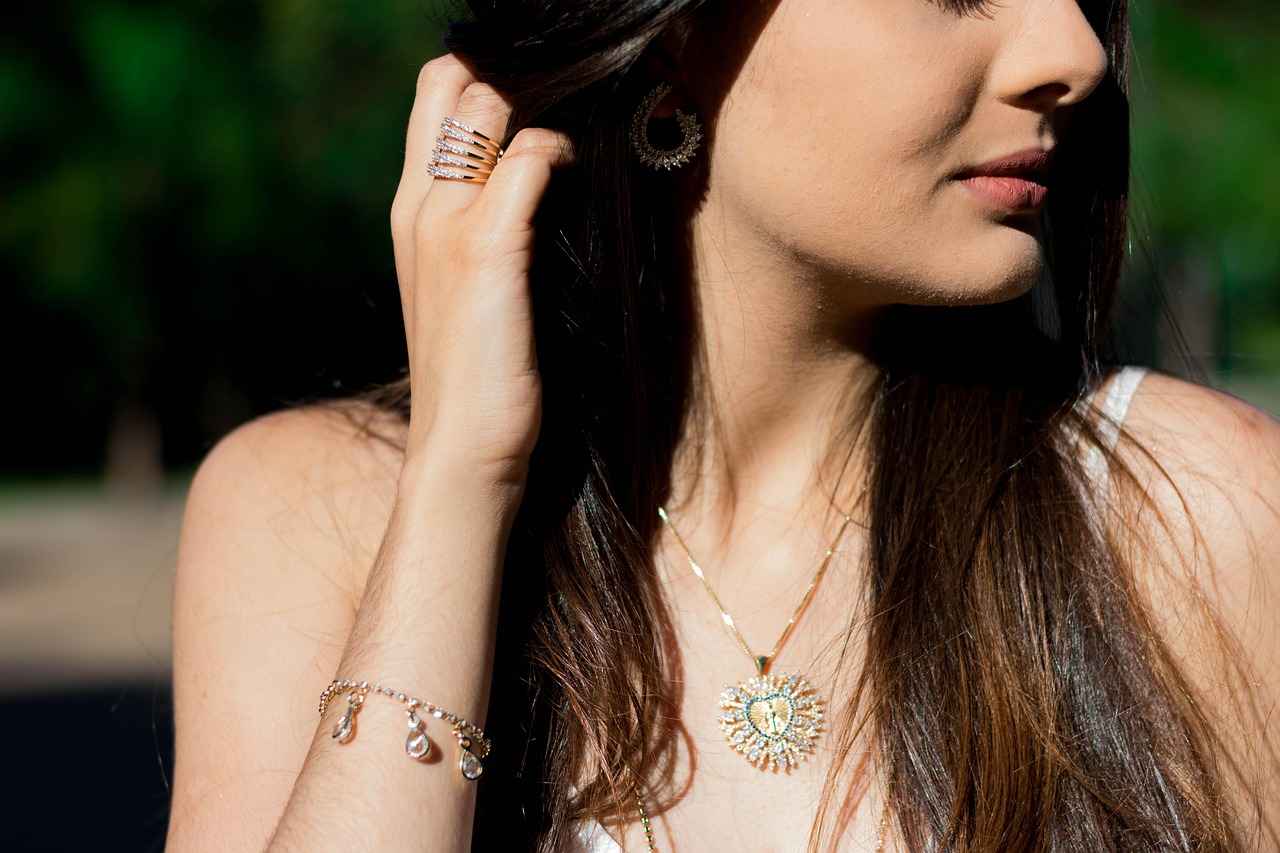
Are There Alternatives to Designer Jewelry?
When considering the world of jewelry, many buyers are often drawn to the allure of designer pieces. However, the high price tags associated with these items can be a significant barrier for those on a budget. Fortunately, there are alternatives to designer jewelry that offer both quality and style without the hefty cost. This article will explore various options that can help you find beautiful jewelry that aligns with your aesthetic and financial needs.
Alternative brands often provide a refreshing take on jewelry design, showcasing unique styles that can rival those of established designers. These brands typically focus on affordability without compromising on quality. Many emerging designers use high-quality materials and innovative designs, making it easier for budget-conscious buyers to find pieces that resonate with their personal style.
Another excellent option for buyers on a budget is custom jewelry. This approach allows you to create a piece that is uniquely yours, tailored to your specific preferences and budget. Working with a local jeweler or artisan can yield stunning results that reflect your individuality. Custom pieces often use similar materials to those found in designer jewelry, ensuring that you do not sacrifice quality for affordability.
Many emerging designers offer high-quality pieces at more accessible prices. These talented individuals often draw inspiration from current trends while infusing their unique flair into their work. To discover these hidden gems, explore local craft fairs, online marketplaces, and social media platforms where many new artists showcase their collections. Investing in pieces from emerging designers not only supports their craft but also allows you to own something truly unique.
Another viable alternative is to consider pre-owned or vintage jewelry. Many online platforms and local shops specialize in selling second-hand pieces that have retained their beauty and charm over the years. This option can often yield stunning finds at a fraction of the original price. Additionally, vintage jewelry often carries a unique history, adding to its appeal.
When exploring alternatives, it is essential to assess the quality of the pieces you are considering. Look for signs of craftsmanship, such as secure settings for stones, smooth finishes, and the overall weight of the piece. Researching the materials used—such as the type of metal or gemstone—can also help ensure that you are making a wise investment.
For those who prefer fine jewelry but are hesitant about the price, consider brands that specialize in affordable luxury. These brands offer pieces made from precious metals and gemstones at lower price points, making fine jewelry more accessible. They often maintain high standards of quality while providing stylish designs that appeal to a wide audience.
In conclusion, exploring alternatives to designer jewelry can open up a world of beautiful options without breaking the bank. Whether you choose custom pieces, emerging designers, vintage finds, or affordable luxury brands, there are countless ways to express your style and taste. By being open to these alternatives, you can enjoy high-quality jewelry that reflects your individuality and fits within your budget.
Custom Jewelry: A Personalized Option
When it comes to expressing individuality and personal style, custom jewelry emerges as a compelling choice. Unlike mass-produced pieces, custom jewelry allows for unique designs that are specifically tailored to individual preferences. This approach not only provides a personal touch but also offers an opportunity to create something truly one-of-a-kind.
While designer jewelry is often celebrated for its prestige and craftsmanship, custom jewelry can rival these aspects in both quality and aesthetics. The ability to collaborate with artisans ensures that each piece reflects the wearer’s personality and story. This level of personalization is often absent in traditional designer collections, where the designs are limited to the brand’s vision.
- Unique Designs: Custom jewelry allows for the creation of exclusive pieces that cannot be found elsewhere, making them perfect for special occasions or as a personal statement.
- Quality Craftsmanship: Many artisans who create custom jewelry take great pride in their work, often using high-quality materials that can compete with those of established designer brands.
- Personal Connection: The process of designing custom jewelry often involves personal stories or significant symbols, making the piece more meaningful and emotionally valuable.
- Investment Potential: Custom pieces can also hold or increase in value, especially if crafted with rare materials or gemstones.
Embarking on a custom jewelry journey can be exciting yet overwhelming. Here are some steps to consider:
- Define Your Vision: Think about what you want in terms of design, materials, and symbolism. Gather inspiration from various sources.
- Choose a Trusted Artisan: Research and select a jeweler with a strong reputation for creating custom pieces. Look at their portfolio to ensure their style aligns with your vision.
- Collaborate: Work closely with the jeweler to refine your ideas. Be open to their suggestions, as they can provide valuable insights based on their expertise.
- Review Samples: Before finalizing, ask to see sketches or 3D models of your design. This ensures that you are satisfied with the direction of the piece.
- Final Touches: Once the design is approved, the artisan will begin crafting your piece. Be patient, as quality craftsmanship takes time.
The cost of custom jewelry can vary widely based on factors such as materials used, complexity of the design, and the jeweler’s expertise. It is essential to set a budget beforehand and communicate this with your jeweler. Many artisans are willing to work within your budget while still delivering a high-quality piece.
In many cases, custom jewelry can indeed compete with designer brands in terms of both quality and style. The key is to find a skilled artisan who understands your vision and can bring it to life. Moreover, the personal connection and uniqueness of a custom piece often outweigh the allure of a designer label.
In summary, custom jewelry offers a fantastic alternative for those seeking personalized and meaningful pieces. With the right approach and collaboration, you can create a stunning piece that not only meets your aesthetic desires but also resonates with your personal story.
Emerging Designers: Hidden Gems
In the ever-evolving world of fashion, emerging designers are making significant waves, offering innovative and high-quality jewelry pieces that cater to a diverse clientele. These designers often bring fresh perspectives and unique aesthetics to the market, allowing consumers to explore styles that stand out from the mainstream. This section delves into the advantages of supporting emerging talent, the quality of their creations, and how they compare to established brands.
Opting for jewelry from emerging designers presents a multitude of benefits. Firstly, these designers frequently offer their pieces at more accessible prices, making it easier for consumers to indulge in luxury without breaking the bank. For instance, while established brands may charge a premium for their legacy and brand prestige, emerging designers provide a chance to own unique, high-quality pieces without the hefty price tag.
Many might wonder if the quality of jewelry from emerging designers can match that of established brands. The answer is a resounding yes. Emerging designers often prioritize craftsmanship and use high-quality materials, ensuring that their pieces are not only visually appealing but also durable. By focusing on artisanal techniques and sustainable practices, they create jewelry that tells a story and reflects their personal vision.
One of the most exciting aspects of shopping from emerging designers is the diversity of styles available. Unlike mainstream brands that cater to mass markets, emerging designers often experiment with unconventional designs and materials. This means that customers can find pieces that resonate with their personal style, whether it’s minimalist, bohemian, or avant-garde. The uniqueness of these pieces allows wearers to express their individuality in a way that mass-produced jewelry simply cannot.
In today’s fashion landscape, sustainability is more important than ever. Many emerging designers are committed to ethical practices, using recycled materials and sustainable sourcing methods. By choosing to invest in their jewelry, consumers are not only acquiring beautiful pieces but also supporting a movement towards a more sustainable and ethical fashion industry. This conscious choice can lead to a positive impact on both the environment and the communities involved in the creation of these pieces.
Finding emerging designers can be as simple as exploring local artisan markets, online platforms, and social media. Websites dedicated to showcasing independent designers, such as Etsy and Depop, offer a plethora of options for those looking to discover hidden gems. Additionally, following fashion influencers and blogs that highlight new talent can provide insights into upcoming designers who are making a name for themselves in the jewelry world.
Investing in pieces from emerging designers can be a wise decision for several reasons. As these designers gain recognition, the value of their work may increase, making their jewelry not only a stylish addition to your collection but also a potential investment. Furthermore, supporting emerging talent fosters creativity and innovation in the fashion industry, ensuring a vibrant future for jewelry design.
In summary, the world of emerging designers offers a rich tapestry of options for jewelry lovers seeking unique styles and high-quality craftsmanship. By choosing to invest in these hidden gems, consumers not only enhance their personal collections but also support a more sustainable and diverse fashion landscape. Embrace the opportunity to discover and celebrate the creativity of emerging designers, and you may just find your next favorite piece of jewelry.
Frequently Asked Questions
- What should I look for when buying designer jewelry?
When purchasing designer jewelry, focus on the quality of materials, craftsmanship, and the brand’s reputation. Look for pieces that not only resonate with your style but also promise longevity and value.
- Is it worth investing in designer jewelry for resale?
Absolutely! Many designer pieces retain or even appreciate in value over time. However, it’s crucial to research brands and styles that have a strong resale market to ensure a wise investment.
- How can I maintain the quality of my designer jewelry?
To keep your designer jewelry looking its best, clean it regularly with appropriate materials, store it properly to avoid scratches, and consider professional maintenance for repairs or restorations.
- Are there affordable alternatives to designer jewelry?
Yes! Many emerging designers and custom jewelry options offer unique and high-quality pieces at more accessible prices, allowing you to enjoy beautiful jewelry without the hefty price tag.
- What makes designer jewelry a good investment?
Designer jewelry often combines exceptional craftsmanship, unique designs, and brand prestige, all of which can enhance its value over time, making it a worthy investment for collectors and enthusiasts alike.
